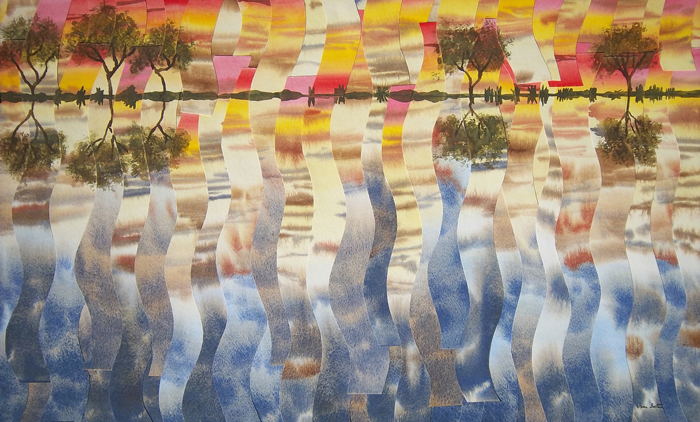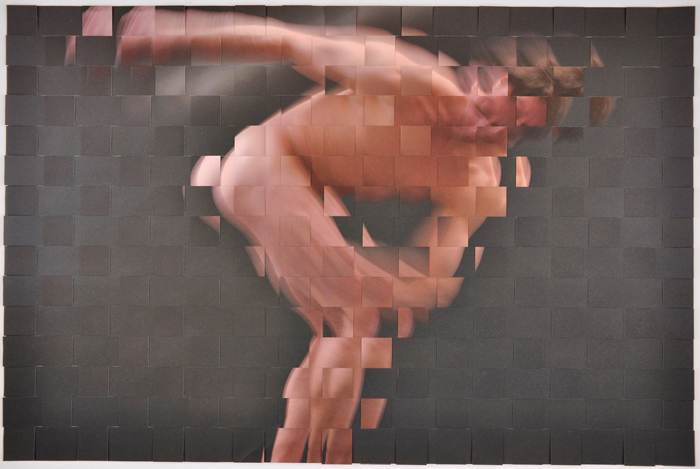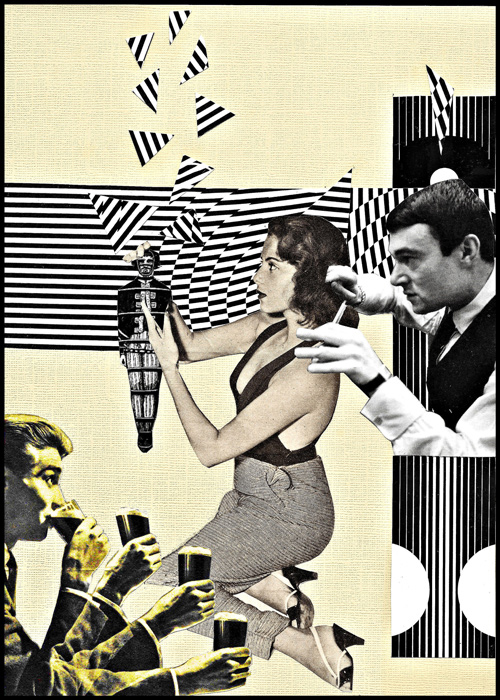
COLLAGE TAXONOMY
Back Together To Make It Different
Jeni Bate called our attention to the term refracturing. It’s a word she uses to describe her own work. “The refractured watercolour medium is all transparent watercolour on watercolour paper.” Bate will make up to five versions of a watercolor painting, varying color slightly, and then cut up the paintings and reassemble them as a collage. She defined refracturing as “cutting an entire photograph or painting, or multiple versions of them, and reassembling to create a new impressionistic version of the same scene.” Bate often cuts her paintings into shapes–hexagons, ovals, stripes–each of which create particular pattern when reassembled.
This article appeared in Kolaj #17. To to read the entire article and the others from this issue, SUBSCRIBE to Kolaj Magazine or Get a Copy of the Issue.

Provincetown, Massachusetts artist Bill Hamlin uses a technique that fits this term as Bate is defining it. Inspired by Lucas Samaras’ manipulations of the dyes in Polaroid film and pattern work found in David Hockney’s collages, Hamlin developed a technique for weaving photographs. The act of cutting the photographs into strips and then weaving the strips back together results in an image that vibrates with energy.

Bate’s vision for the term is limited to a wholesale reworking of an image. Refracturing is “when an artwork is created by painting a scene one or multiple times, slightly differently each time, and then cutting it up and collaging it back together to make a different version of the original scene,” she writes. But we started to see collage artists working individual fragments in this manner. In The Hairdresser, AF Knott uses a black-and-white striped pattern that he cuts and reshapes as a compositional element in the collage. La Xenakiss’ Avec le soleil sortant de sa bouche (record cover) appears to contain a number of refractured elements. Fields of black and white dots, yellow and white stripes, and other patterns are cut into triangles and trapezoids and reassembled.
In all of these artists’ work, one thing is clear. The technique of refracturing not only abstracts an image, it adds a great deal of energy to that image. It’s a remarkable technique that works for a wholesale image, as Bates intended in her definition, but also for elements within a collage.
The Collage Taxonomy Project is an ongoing survey of the wider collage community that attempts to define the language we use to talk about collage. Visit the project’s website to suggest words or contribute definitions.
Image (top):
The Depth of Morning (detail)
by Jeni Bate
20”x33”
transparent watercolour on watercolour paper, glue on foamcore
2011
Image (centre):
Man in Motion
by Bill Hamlin
12″x18″
woven colour photograph
2014
Edition of 10 archival pigment prints
Represented by The Schoolhouse Gallery, Provincetown, Massachusetts
Image (bottom):
The Hairdresser
by AF Knott
11″x8″
paper and glue
2016
